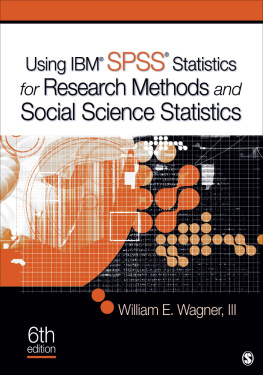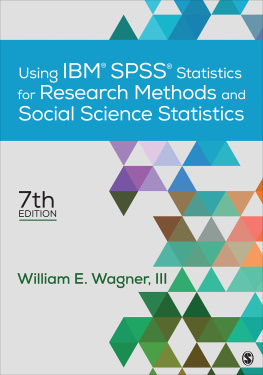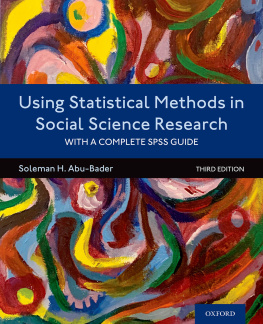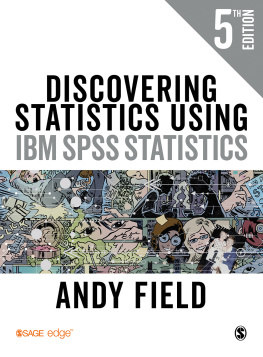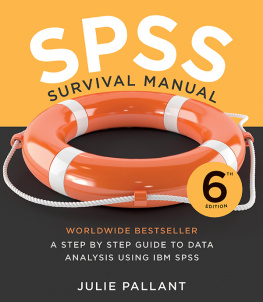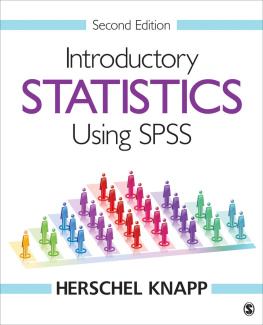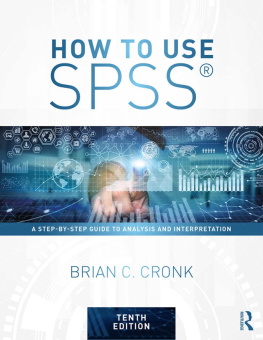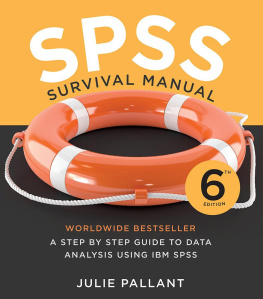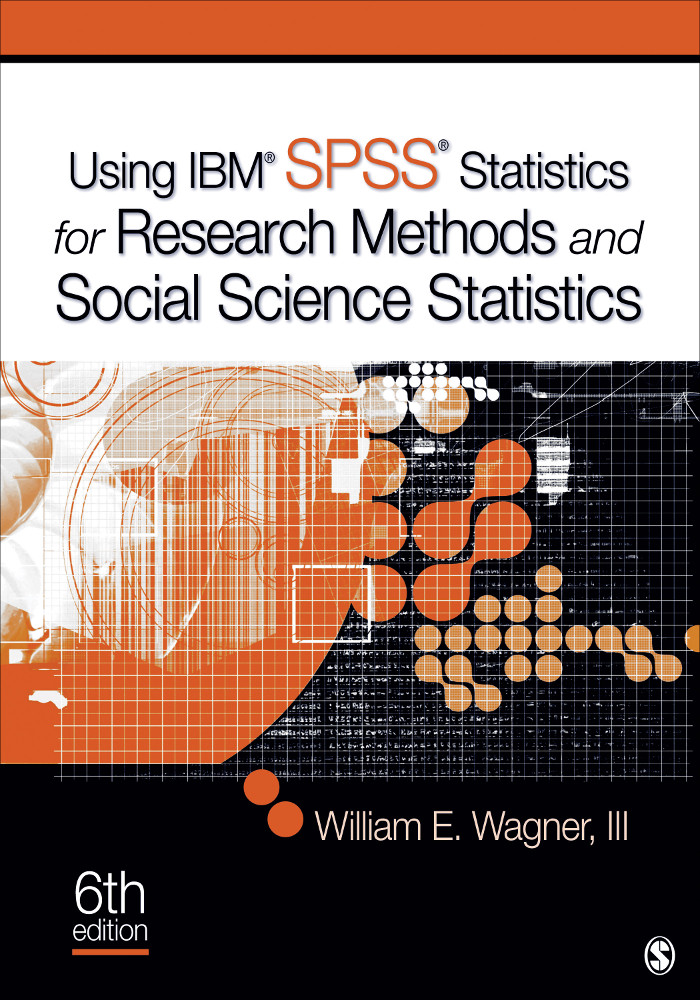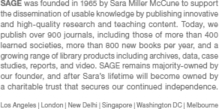FOR INFORMATION:
SAGE Publications, Inc.
2455 Teller Road
Thousand Oaks, California 91320
E-mail: order@sagepub.com
SAGE Publications Ltd.
1 Olivers Yard
55 City Road
London EC1Y 1SP
United Kingdom
SAGE Publications India Pvt. Ltd.
B 1/I 1 Mohan Cooperative Industrial Area
Mathura Road, New Delhi 110 044
India
SAGE Publications Asia-Pacific Pte. Ltd.
3 Church Street
#10-04 Samsung Hub
Singapore 049483
Copyright 2017 by SAGE Publications, Inc.
All rights reserved. No part of this book may be reproduced or utilized in any form or by any means, electronic or mechanical, including photocopying, recording, or by any information storage and retrieval system, without permission in writing from the publisher.
All trademarks depicted within this book, including trademarks appearing as part of a screenshot, figure, or other image are included solely for the purpose of illustration and are the property of their respective holders. The use of the trademarks in no way indicates any relationship with, or endorsement by, the holders of said trademarks. SPSS is a registered trademark of International Business Machines Corporation.
Printed in the United States of America
Library of Congress Cataloging-in-Publication Data
Names: Wagner, William E. (William Edward), author.
Title: Using IBM SPSS statistics for research methods and social science statistics / William E. Wagner, III, California State University Channel Islands.
Description: Sixth edition. | Los Angeles : SAGE, [2016] | Includes bibliographical references.
Identifiers: LCCN 2015043189 | ISBN 978-1-5063-3172-0 (pbk. : alk. paper)
Subjects: LCSH: Social sciencesStatistical methods. | SPSS for Windows.
Classification: LCC HA32 .W34 2016 | DDC 300.285/555dc23 LC record available at http://lccn.loc.gov/2015043189
This book is printed on acid-free paper.
Production Editor: David C. Felts
Typesetter: C&M Digitals (P) Ltd.
Preface
This book was written for those learning introductory statistics or with some basic statistics knowledge who want to use IBM SPSS Statistics* software to manage data and/or carry out basic statistical analyses. It can also be a useful tool to gain an understanding of how SPSS Statistics software works before going on to more complicated statistical procedures. This volume is an ideal supplement for a statistics or research methods course. Although it can be used with any research methods or statistics book or materials, this book was tailored to complement all editions of Investigating the Social World, by Russell K. Schutt, and Social Statistics for a Diverse Society, by Chava Frankfort-Nachmias and Anna Leon-Guerrero (latest editions published in 2011 and 2014, respectively). It can also be used as a guide for those working with basic statistics on their own. The book provides information for users about some of the important mechanics of SPSS Statistics operating procedures for simple data management along with accessible introductory instructions to statistical operations.
References
Frankfort-Nachmias , C. , & Leon-Guerrero , A. ( 2014 ). Social statistics for a diverse society ( 7th ed.). Thousand Oaks, CA : Sage .
Schutt , R. ( 2011 ). Investigating the social world: The process and practice of research ( 7th ed.). Thousand Oaks, CA : Sage .
*IBM SPSS Statistics was formerly called PASW Statistics. SPSS is a registered trademark of International Business Machines Corporation.
Acknowledgments
Many thanks go to Jerry Westby at SAGE for his support and vision. Anna Leon-Guerrero and Russell K. Schutt were especially helpful, providing insightful reviews and guidance for earlier editions of this book.
Overview
This book serves as a guide for those interested in using IBM SPSS Statistics software to assist in statistical data analysiswhether as a companion to a statistics or research methods course, a stand-alone guide for a particular project, or an aid to individual learning. The images and directions used in this book come from IBM SPSS Statistics Version 22.0, first released in August 2013. If you are using IBM SPSS Statistics Version 21, you will notice considerable consistency. For anyone using SPSS Version 20 or 19, or even PASW Statistics 18 or earlier, there will be a great deal of consistency with these instructions and images, although there will be some areas where there are differences due to the upgrades in the SPSS Statistics Version 22 software. So, the older your version of SPSS Statistics (or PASW Statistics), the more likely you will see some differences in methods, availability of options, screen views, and output format.
Whats the Difference Between SPSS Statistics and PASW Statistics? None.
There is essentially no difference. The program formerly known simply as SPSS became SPSS Statistics with the Version 17.0 release, and then PASW Statistics with the Version 18.0 release. After SPSS, Inc., became an IBM company in October 2009, the branding going forward was changed so that future releases of the software (Version 19.0 and beyond) are known as IBM SPSS Statistics. When SPSS was originally developed, it stood for Statistical Package in the Social Sciences. The motivation for the PASW (Predictive Analytics Software) branding change was to reflect the considerable reach of the software to more business-oriented realms, although this name is used only for Version 18.
Statistical Software
The SPSS/PASW Statistics software works with several kinds of computer files: data files, output files, and syntax files. Data files are those computer files that contain the information the user intends to analyze. Output files contain the statistical analysis of these data, often displayed as tables, graphs, and/or charts. Syntax files are computer instructions that tell the SPSS Statistics software what to do. Syntax files are not used with the student of this book. IBM discontinued the student version of SPSS software for Version 19 (PASW was the last version for which a limited student version was available) and has not released any information about a student version for Version 22 as of this writing.

